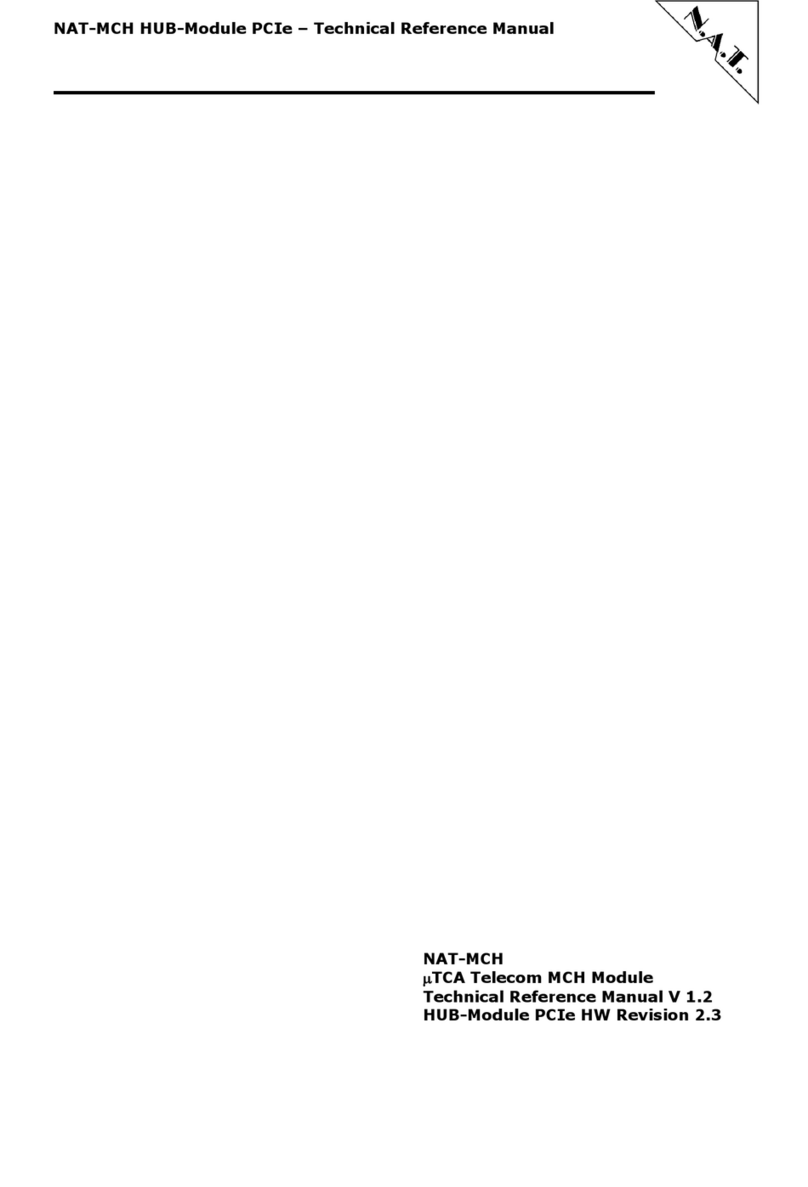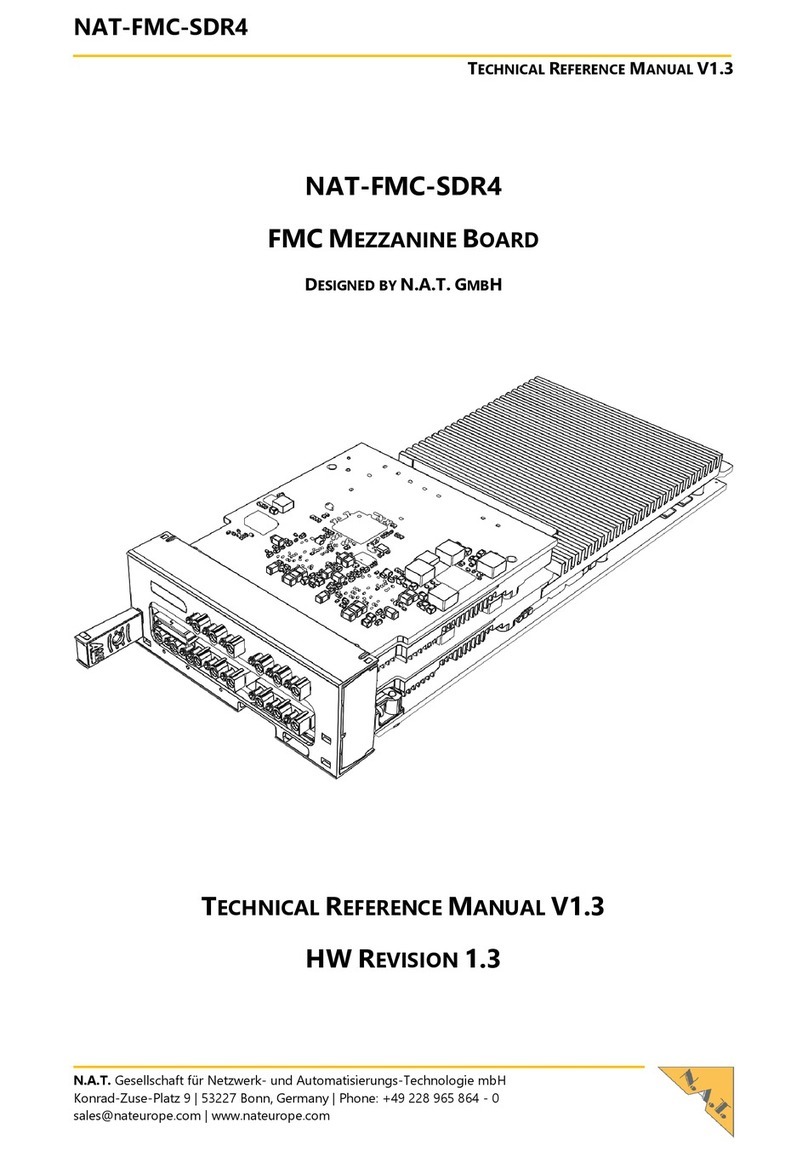
NAT-MCH BASE-Module–Technical Reference Manual
Version 2.10 © N.A.T. GmbH 4
Table of Contents
TABLE OF CONTENTS .......................................................................................... 4
LIST OF TABLES .................................................................................................. 6
LIST OF FIGURES................................................................................................ 6
CONVENTIONS.................................................................................................... 7
1INTRODUCTION ........................................................................................... 8
2OVERVIEW ................................................................................................... 9
2.1 MAJOR FEATURES......................................................................................... 9
2.2 BLOCK DIAGRAM ........................................................................................10
2.3 LOCATION DIAGRAM ....................................................................................11
3BOARD FEATURES ...................................................................................... 12
3.1 CPU .......................................................................................................12
3.2 MEMORY ..................................................................................................12
3.2.1 DDR2SDRAM....................................................................................12
3.2.2 FLASH.............................................................................................12
3.3 BACKPLANE INTERFACES................................................................................13
3.3.1 IPMB...............................................................................................13
3.3.2 I²C .................................................................................................13
3.3.3 Ethernet ..........................................................................................13
3.4 FRONT PANEL INTERFACES .............................................................................13
3.4.1 Ethernet Uplink Ports ........................................................................13
3.4.2 USB Debug Port ...............................................................................14
3.4.3 Clock Interface .................................................................................14
3.4.3.1 Coax-IO ..................................................................................................14
3.4.3.2 RJ45-Clock-Interface ................................................................................15
3.5 INTERFACE TO EXTENSION MODULES .................................................................15
3.5.1 NAT-MCH CKL-Module / NAT-MCH CLK-PHYS-Module ............................15
3.5.2 NAT-MCH HUB-Module ......................................................................15
3.6 I2CDEVICES .............................................................................................16
3.7 ETHERNET SWITCH ......................................................................................16
4HARDWARE ................................................................................................ 17
4.1 FRONT PANEL AND LEDS...............................................................................17
4.1.1 MCH Basic-LEDs ...............................................................................17
4.1.2 RJ45-LEDs .......................................................................................17
4.1.3 Status LEDs .....................................................................................17
4.2 CONNECTORS AND SWITCHES .........................................................................18
4.2.1 CON1: MCH Connector ......................................................................19
4.2.2 CON2: Extension Module Connector ....................................................21
4.2.3 JP1: Altera FPGA Programming Port ....................................................21
4.2.4 JP2: LED-Module Connector ...............................................................21
4.2.5 JP3: Development Connector .............................................................22
4.2.6 P3: External Clock Transceiver Module Connector .................................22
4.2.7 SW1: Hot Swap Switch......................................................................22
4.2.8 SW2: General Purpose DIL Switch ......................................................22
4.2.9 S1: Micro USB Connector ..................................................................23































